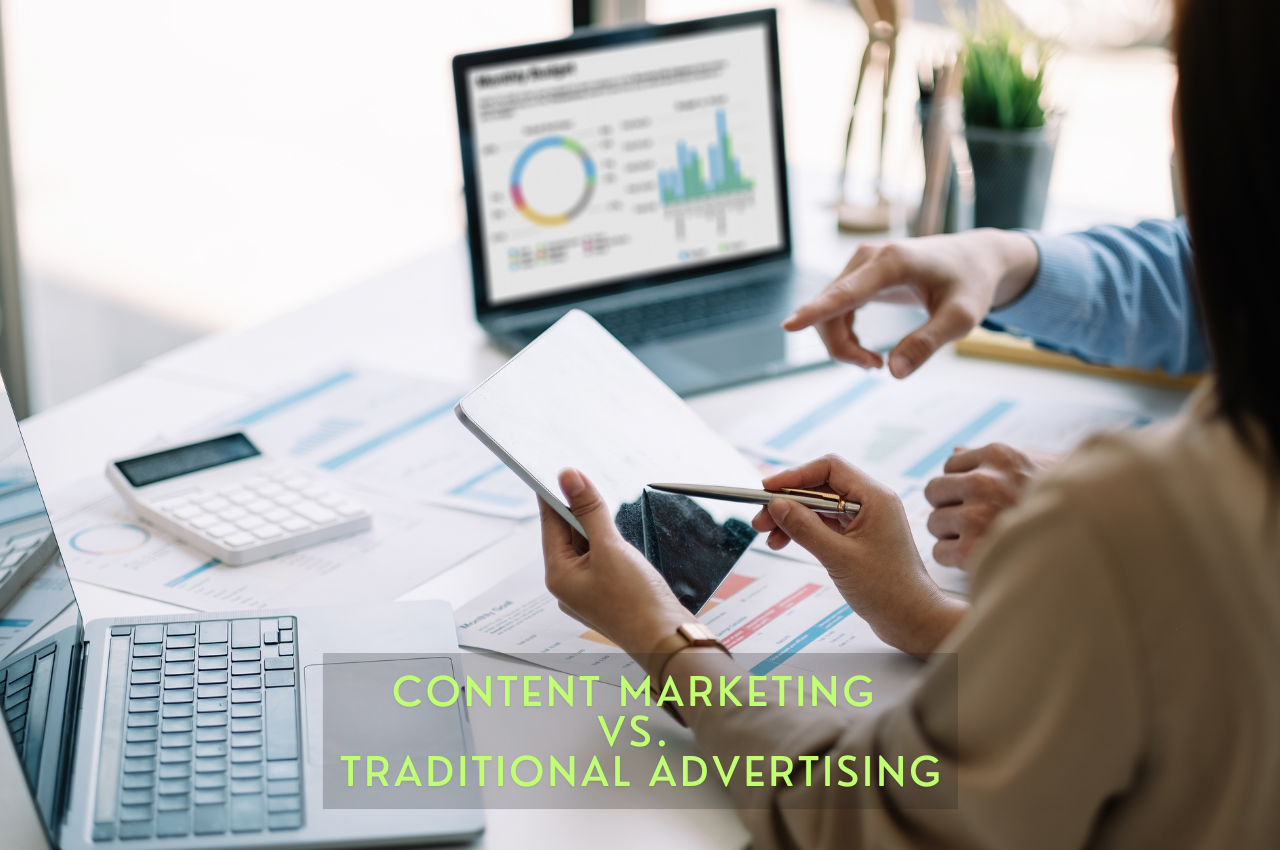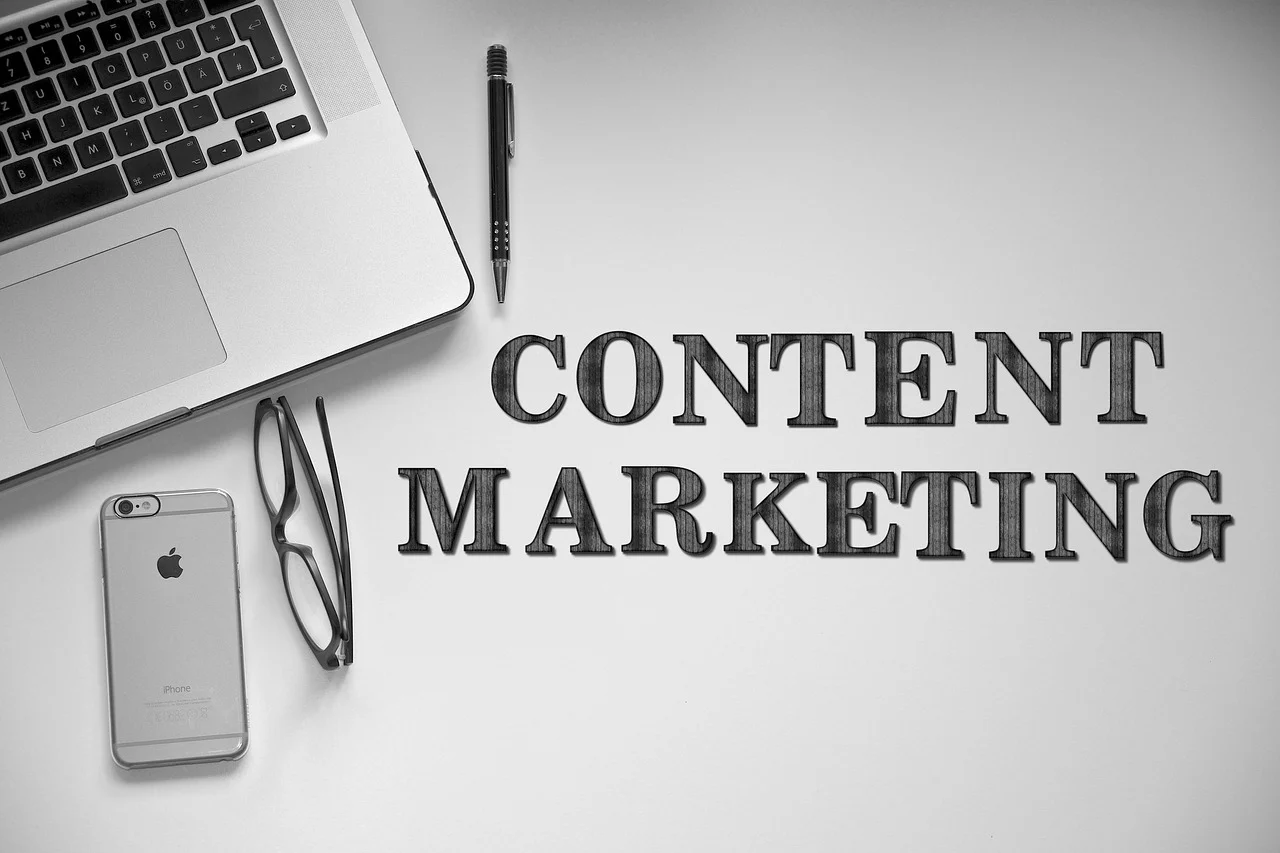In today’s ever-evolving digital landscape, businesses are constantly seeking the most effective strategies to reach their audience. Two prominent methods stand out: content marketing and traditional advertising. But which one truly reigns supreme? Let’s dive deep into the intricacies of both to determine their effectiveness.

What is Content Marketing?
Content marketing involves creating and sharing valuable, relevant content to attract and engage a target audience. This can include blog posts, videos, social media posts, e-books, and more. The primary aim is to provide information that solves problems or offers insights, building a relationship with potential customers.
Also, Read- Effective PPC Campaign Strategies for Small Businesses
Key Components of Content Marketing
- Blog Posts: Informative articles that address common questions or issues.
- Videos: Engaging visual content that explains concepts or demonstrates products.
- Social Media Posts: Interactive content that fosters community engagement.
- E-books and Whitepapers: In-depth guides that provide substantial value on a particular topic.
What is Traditional Advertising?

Traditional advertising refers to conventional methods of promoting products and services through mediums like television, radio, print, and outdoor ads. This approach focuses on reaching a broad audience through paid placements.
Key Components of Traditional Advertising
- Television Commercials: Short ads broadcast during TV shows.
- Radio Spots: Audio ads played during radio programs.
- Print Ads: Advertisements in newspapers, magazines, and other printed materials.
- Billboards: Large outdoor displays placed in high-traffic areas.
Historical Context
Evolution of Content Marketing
Content marketing isn’t new; it dates back to the 19th century when John Deere launched a magazine to help farmers. Over time, it evolved with the advent of the internet, allowing brands to share content more widely and interactively.
Also, Read – The Importance of Analytics in Digital Marketing
Evolution of Traditional Advertising
Traditional advertising has roots in ancient civilizations with public notices carved in stone. The 20th century saw it flourish with the rise of mass media like radio and television, reaching peak influence before the digital age.
The Goals of Each Approach
Objectives of Content Marketing
- Brand Awareness: Creating content that resonates with potential customers.
- Customer Engagement: Building a loyal audience through valuable interactions.
- Lead Generation: Attracting potential customers by addressing their needs.
- Sales: Nurturing leads through informative content that guides purchasing decisions.

Objectives of Traditional Advertising
- Immediate Impact: Capturing attention quickly with striking visuals and messages.
- Broad Reach: Targeting a wide audience through mass media channels.
- Brand Recognition: Repeating ads to ensure the brand stays top-of-mind.
- Sales: Encouraging immediate consumer action through persuasive messaging.
Audience Engagement
How Content Marketing Engages the Audience
Content marketing engages by offering value first. Instead of directly pushing products, it provides useful information that addresses the audience’s interests and needs. This fosters trust and positions the brand as a thought leader.
How Traditional Advertising Engages the Audience
Traditional advertising uses interruption-based methods, catching the audience’s attention during their activities. Its effectiveness relies on memorable visuals and slogans that stick with consumers even after the ad has ended.
Cost Implications
Cost Analysis of Content Marketing
Content marketing can be cost-effective, especially for small businesses. Creating high-quality content involves investment in time and resources, but the long-term benefits often outweigh the initial costs. Many content marketing strategies can be scaled according to budget.
Cost Analysis of Traditional Advertising
Traditional advertising typically requires a significant upfront investment. Television and radio spots, print ads, and billboards can be expensive, especially in prime locations or times. The high cost is often justified by the extensive reach and immediate impact.
Measuring Success
Metrics for Content Marketing Success
- Website Traffic: Number of visitors to the content.
- Engagement Rates: Likes, shares, comments, and interactions.
- Lead Generation: Number of leads captured through content.
- Conversion Rates: Leads that turn into customers.
- SEO Performance: Improved search engine rankings.
Metrics for Traditional Advertising Success
- Reach: Number of people who see the ad.
- Frequency: How often the audience is exposed to the ad.
- Brand Recall: How well the audience remembers the ad.
- Sales Figures: Increase in sales following the ad campaign.
- Return on Investment (ROI): Revenue generated compared to ad spend.
Adaptability and Flexibility
Adaptability of Content Marketing
Content marketing is highly adaptable. Brands can quickly adjust their strategies based on audience feedback and trends. Whether it’s a new blog post or a social media campaign, content marketing allows for real-time changes and personalization.
Flexibility of Traditional Advertising
Traditional advertising is less flexible. Once an ad is placed, changing it can be costly and time-consuming. However, it can still be effective for consistent messaging and reaching audiences not frequently online.
Consumer Trust and Credibility
Trust in Content Marketing
Consumers often trust content marketing more because it focuses on providing value rather than selling. High-quality, informative content builds credibility and positions the brand as an authority in its field.
Trust in Traditional Advertising
Trust in traditional advertising can vary. While long-established brands may benefit from high credibility, new or less known brands might struggle to gain trust through traditional ads alone.
Reach and Targeting
Reach of Content Marketing
Content marketing can reach a global audience, especially through digital platforms. With SEO and social media strategies, brands can target specific demographics and interests, ensuring their content reaches the right people.
Reach of Traditional Advertising
Traditional advertising excels in broad reach. Television, radio, and print ads can target large audiences quickly. However, targeting is generally less precise compared to digital methods, making it less efficient for niche markets.
Longevity and Sustainability
Longevity of Content Marketing Efforts
Content marketing offers long-term benefits. Evergreen content continues to attract and engage audiences over time. Once published, a blog post or video can generate traffic and leads for years, providing ongoing value.
Sustainability of Traditional Advertising Efforts
Traditional advertising is often short-lived. Ads run for a specific period and then disappear, requiring continuous investment to maintain visibility. The immediate impact is significant, but the long-term effects are limited without sustained effort.
Case Studies
Successful Content Marketing Examples
- HubSpot: Known for its comprehensive blog and free educational resources, HubSpot has built a massive following and authority in inbound marketing.
- Red Bull: Through extreme sports videos and events, Red Bull has created a lifestyle brand that resonates deeply with its target audience.
Successful Traditional Advertising Examples
- Coca-Cola: Iconic TV commercials like the “Hilltop” ad have cemented Coca-Cola’s brand identity and global reach.
- Apple: With memorable TV ads and print campaigns, Apple has successfully positioned itself as a leader in innovation and design.
Pros and Cons
Pros and Cons of Content Marketing
Pros:
- Builds long-term relationships with customers.
- Cost-effective with high ROI potential.
- Enhances brand credibility and trust.
- Highly adaptable and scalable.
Cons:
- Requires time and consistent effort.
- Results are not immediate.
- High-quality content creation can be resource-intensive.
Pros and Cons of Traditional Advertising
Pros:
- Immediate and broad reach.
- High impact with memorable ads.
- Effective for brand recognition.
Cons:
- Expensive with high upfront costs.
- Less targeted and personalized.
- Short-lived effects requiring continuous investment.
Conclusion
Both content marketing and traditional advertising have their unique strengths and challenges. Content marketing excels in building long-term relationships and trust, offering a cost-effective way to engage a targeted audience. Traditional advertising, on the other hand, delivers immediate impact and broad reach, making it ideal for brand recognition and quick results. The choice between the two depends on your business goals, budget, and target audience. For many businesses, a balanced approach leveraging both strategies can yield the best results.
FAQs
1. Can content marketing and traditional advertising be used together? Yes, integrating both strategies can enhance overall marketing effectiveness by combining the strengths of each approach.
2. Is content marketing more suitable for small businesses? Content marketing can be particularly beneficial for small businesses due to its cost-effectiveness and ability to build long-term relationships with customers.
3. How can I measure the success of my content marketing efforts? Success can be measured through various metrics such as website traffic, engagement rates, lead generation, conversion rates, and SEO performance.
4. What are some common forms of traditional advertising? Common forms include television commercials, radio spots, print ads, and billboards.
5. Which strategy is more cost-effective in the long run? Content marketing often proves more cost-effective in the long run due to its lasting impact and ability to generate ongoing value with less continuous investment.

